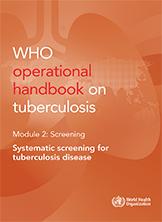Definitions
Adolescent: a person aged 10–19 years.
Adult: a person over 19 years of age.
Advanced HIV disease: for adults, adolescents, and children aged 5 years or more, “advanced HIV disease” is defined as a CD4 cell count of less than 200 cells/mm³ or a WHO clinical stage 3 or 4 event at presentation for care. All children with HIV aged under 5 years should be considered as having advanced disease at presentation.

 Feedback
Feedback